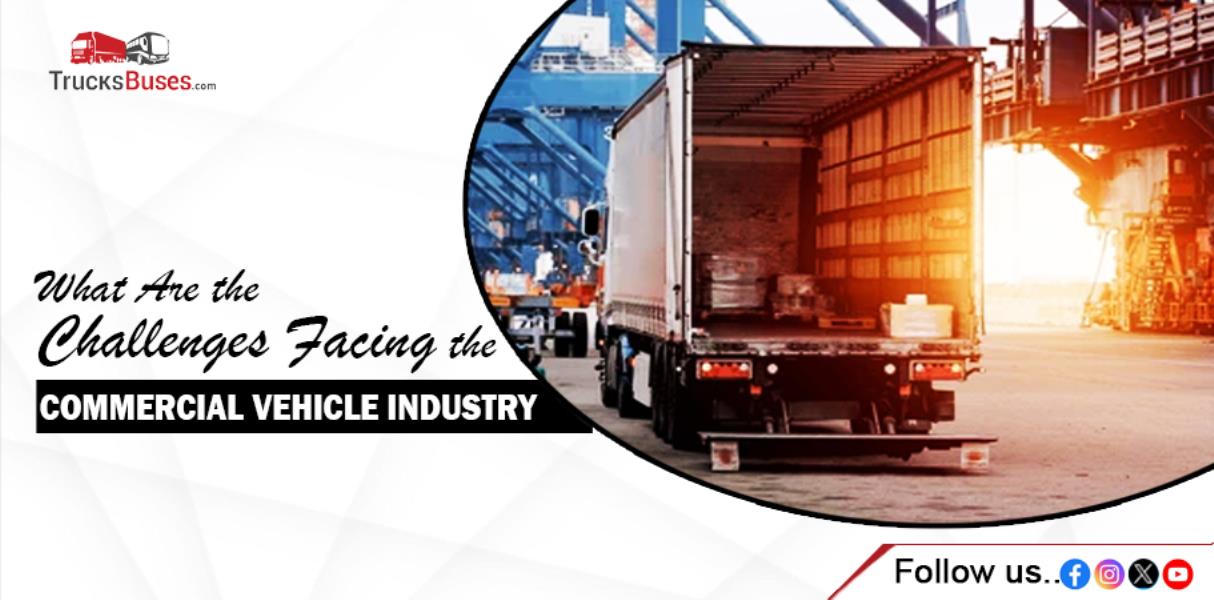What Are the Challenges Facing the Commercial Vehicle Industry Today?
The commercial vehicle industry plays a crucial role in the global economy. It includes vehicles for transporting goods and services, such as trucks, buses, and mini-trucks. However, this industry faces several challenges that affect its growth and efficiency. At TrucksBuses, we will explore some of the main challenges facing the commercial vehicle sector today.
Market Saturation: What It Means for the Future of Commercial Vehicles

Market saturation occurs when too many similar vehicles, like trucks and buses, are available for sale. This makes it harder for companies to sell their products. As competition increases, manufacturers may lower prices to attract buyers. While this can benefit customers, it can also lead to lower company profits. Market saturation can slow innovation in the long run, as businesses focus on surviving rather than creating new technology. Companies need to find unique features or services that set them apart in this crowded market to succeed.
Economic Uncertainty
One of the biggest challenges is economic uncertainty. Economic changes can significantly impact demand for commercial vehicles, including cargo trucks and pickup trucks. For example, during a recession, businesses may cut back on spending. This means they may delay buying new trucks or buses. On the other hand, when the economy is doing well, companies are more likely to invest in new vehicles to expand their operations.
Moreover, fluctuating fuel prices can also create uncertainty. If fuel prices rise suddenly, transportation costs increase. This can lead businesses to reconsider their vehicle purchases or switch to more fuel-efficient options, such as mini trucks.
Regulatory Compliance
The commercial vehicle industry is heavily regulated. Governments set strict rules about safety, emissions, and operating standards for vehicles like cargo trucks and buses. While these regulations aim to protect the environment and ensure safety, they can also be burdensome for manufacturers and operators.
For instance, new emissions standards often require companies to invest in advanced technologies. This can increase the cost of producing and maintaining trucks and buses. Smaller companies may struggle to comply with these regulations, leading to increased operational costs and potential penalties for non-compliance.
Technological Advancements
Technology is advancing rapidly in the commercial vehicle sector. Innovations like electric trucks, autonomous buses, and telematics are becoming more common. While these technologies offer many benefits, they also present challenges.
For one, transitioning to electric vehicles requires significant investment in infrastructure, such as charging stations. Many businesses may not have the budget to make this switch immediately. Additionally, the learning curve associated with new technologies can be steep. Drivers and fleet managers may need training to adapt to new systems, which can lead to downtime and increased costs.
Labor Shortages
The commercial vehicle industry is also grappling with labor shortages. Many drivers are retiring, and there are not enough new drivers entering the field to replace them. This is particularly true in long-haul trucking, where the job can be demanding and require long hours on the road.
Additionally, there is a shortage of skilled technicians needed for vehicle maintenance and repairs. As vehicles, including pickup trucks and cargo trucks, become more complex with advanced technology, finding qualified workers to service them becomes increasingly challenging. This can lead to longer wait times for repairs, impacting the overall efficiency of fleets.
Environmental Concerns
As environmental awareness grows, the commercial vehicle industry faces increasing pressure to reduce its carbon footprint. Consumers and governments are demanding greener solutions, pushing companies to find ways to make their operations more sustainable.
For many businesses, this means investing in new technologies, like electric trucks or hybrid buses. However, the cost of these vehicles can be high, making it difficult for some companies to adopt them. Moreover, older vehicles that do not meet new emissions standards may need to be replaced, adding further financial strain.
Competition and Market Saturation
The commercial vehicle market is highly competitive. With many brands vying for market share, companies must constantly innovate and improve their offerings. This can put pressure on profit margins, as businesses may lower prices to attract customers.
In addition, market saturation can lead to reduced sales opportunities. With so many vehicles available, including mini trucks and buses, customers may take longer to make purchasing decisions. This can result in longer sales cycles and decreased revenue for manufacturers and dealers.
Changing Consumer Preferences
Consumer preferences are evolving, and the commercial vehicle industry must adapt to these changes. More companies are looking for vehicles that offer flexibility and can meet diverse needs. For example, some businesses may require smaller, more fuel-efficient vehicles like mini trucks for urban deliveries, while others may need larger cargo trucks for long-haul transport.
Moreover, customers are increasingly interested in vehicle connectivity features, such as GPS tracking and real-time monitoring. Meeting these demands requires manufacturers to invest in research and development, adding to operational costs.
Insurance Costs
Insurance is a significant expense for commercial vehicle operators. Rising insurance premiums can strain budgets, particularly for small and medium-sized businesses. Factors contributing to higher insurance costs include increased accident rates, legal claims, and the overall risk associated with commercial driving.
Companies must find ways to manage these costs while ensuring they have adequate coverage for their trucks and buses. This might involve implementing better safety practices or investing in technology to monitor driver behavior.
Conclusion
The commercial vehicle industry is at a crossroads, facing numerous challenges that can impact its future. Economic uncertainty, regulatory compliance, technological advancements, and supply chain disruptions are just a few of the hurdles that companies must overcome.
To thrive in this competitive landscape, businesses must adapt to changing consumer preferences and invest in sustainable solutions. By addressing these challenges head-on, the commercial vehicle industry encompassing trucks, buses, cargo trucks, mini trucks, and pickup trucks, can continue to play a vital role in the global economy for years to come.
Related Blog:
Leading Tata Small Commercial Vehicles in India for 2024
Key Insurance Factors for Commercial Vehicle Fleets